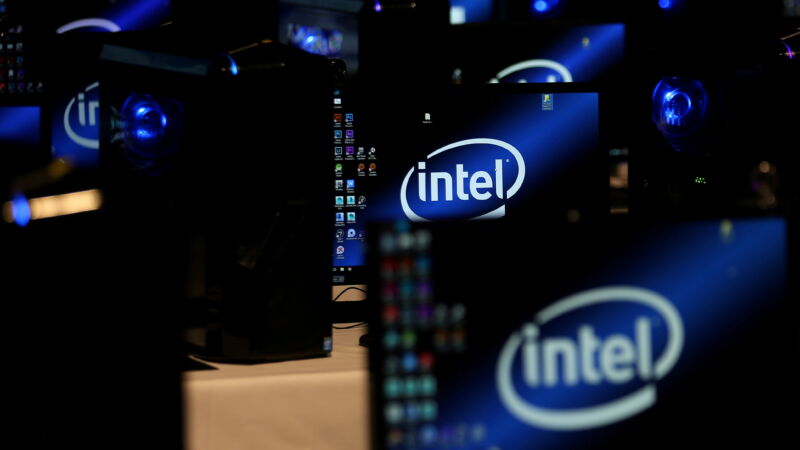As disclosure regulations on emissions become more stringent, companies will need to address this issue in their supply chains — something Intel is already doing
In the first quarter of last year, almost two-thirds (64%) of legal decision-makers at manufacturing companies with annual revenues greater than $1 billion indicated that environmental, social & governance (ESG) issues were important for their business, according to recent research from the Thomson Reuters Institute.
Further, these findings were recorded before the U.S. Securities & Exchange Commission (SEC) proposed that public companies begin reporting their carbon emissions for Scopes 1, 2, and 3. Since then, the ESG regulatory landscape has changed dramatically with an increased likelihood that the percentage of legal buyers viewing ESG as important is much higher.
The question remains, however, whether or not U.S. companies will be ready once the rules are finalized. Indeed, only 30% of U.S. organizations currently are reporting Scope 1 and 2 emissions and only 21% of U.S. organizations are reporting Scope 3 emissions. Overall, 32% of U.S. organizations currently have no greenhouse gas (GHG) reporting at all as of October 2022, according to Reuters Insights Sustainability research.
Tech tian Intel falls into that 21% of companies that are already reporting on carbon emissions throughout their supply chain (Scope 3 emissions). In fact, Intel has committed to some level of corporate social responsibility reporting since the 1990s. Adam Schafer, Senior Director of Supply Chain Sustainability at Intel, who has been in the role since 2017, explained how the company’s industry collaboration enables more efficient and effective management of its supply chain sustainability programs.
In his role, Schafer says he oversees Intel’s complex supply chains — which include manufactured outsourcing, direct manufacturing and fabrication, and equipment and indirect materials — to ensure due diligence and global compliance in the company’s human rights, code of conduct, responsible minerals, and Scope 3 supply chain commitments. Intel’s effort also includes operational components of supplier diversity, equity & inclusion (DEI) and the company’s green chemistry program.
Schafer describes Intel’s ESG program as mature and complex with a commitment to staying ahead of the curve when compared to its peers. The foundation of the company’s ESG strategy concerns transparency and ethics, he says, adding that to enhance transparency, the company unified its ESG goals around its RISE (Responsible Inclusive, Sustainable and Enabling) framework in 2019, which outlines 27 goals and targets for achievement by 2030. And to simplify how it communicates its ESG strategic progress to its stakeholders, Intel integrated its reporting mechanisms across its annual and quarterly SEC filings in 2021 as well as its corporate social responsibility report.
Driving compliance in complex supply chains
One of the most time-consuming and complex areas of sustainability compliance across Intel’s supply chain is its responsible minerals program. As a semiconductor company, Intel uses several raw materials that need to be traced to the source of their extraction.
One of the key mechanisms that helps Intel’s ability to trace its raw materials to their source is its leadership in the responsible mineral initiative (RMI), which is part of the Responsible Business Alliance (RBA), the largest industry coalition dedicated to corporate social responsibility in global supply chains.
By using RMI requirements as the centerpiece of its program, Intel set its due diligence requirements in responsible minerals around the ability to track and trace down the origins of their minerals from which smelters these raw minerals were extracted down to the mine from which they came. The RMI outlines the requirements for certification of smelters for hundreds of companies which use these raw minerals. And last year, 98% of smelters for these materials that Intel used were RMI-certified, Schafer says.
Part of the challenge for Schafer is keeping up with the evolving expectations of stakeholders on carbon emissions and responsible minerals while maintaining rigor in the areas for which he is responsible. For example, the responsible sourcing movement has expanded beyond minerals quickly over the last 5 years. “The regulatory demand signal is shifting, but one important point to underscore is that the standards aren’t necessarily changing, but the degree of traceability — to be able to understand as a company what are you making, where it all comes from, and how was it made — are evolving,” Schafer explains.
“Using responsible minerals as an example, going to the smelter-level and doing our due diligence and reporting is getting more detailed,” he adds. “Right now, we know the percentage of our responsibly sourced minerals, but where it is going is [for us] to identify where every kilogram of particular material comes from. This is traceability — and this is the real challenge across our supply,” he elaborates.
Participation enables efficient monitoring
An important but often overlooked element of creating ESG due diligence and compliance programs is collaboration with industry participants for better efficiency among both the suppliers and the buyers. Indeed, Intel’s participation with the RBA makes responsible minerals compliance many times more efficient compared to having Intel use its own framework, notes Schafer.
One of the key drivers for Intel’s leadership in the RBA is the fact that 75% to 80% of its revenue is represented through the RBA membership. Participation in the RBA enables the company to demonstrate the importance of being a responsible business to its customers and suppliers, which are two key ESG stakeholders. It also helps the company stay up to date on the materiality of these two key stakeholder groups.
“We can’t make progress alone, and we can’t accelerate achievement of our goals alone,” Schafer says. “If we tried to do this alone, it would be less effective and more expensive, so we have to work with others to get them on board, and make sure they understand their obligations and what it is that we all need to meet those stakeholder demands.”







